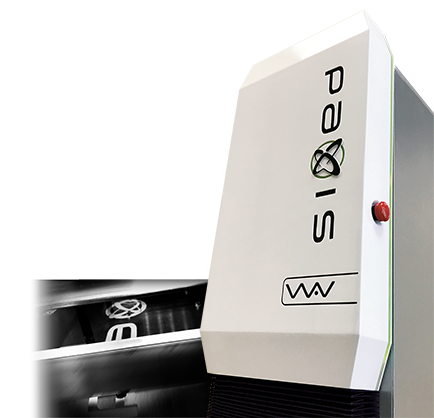Paxis, an Illinois-based OEM, has announced a collaboration with BASF, world’s largest chemical producer, to study advanced applications of Paxis’ Wave Applied Voxel (WAV) 3D printing platform, a novel 3D printing approach currently under development.
As Paxis put it, “WAV currently doesn’t fit within any of the defined ASTM standards for Additive Manufacturing. The standards will need to be re-written to include this entirely new process and technology.”
Mike Littrell, CEO of Paxis, said, “Pairing innovative materials at the earliest stages of designing the WAV technology is critical to meeting the needs of end-users […] Through our early access program our approach is to work with progressive material manufacturers like BASF, as well as commercial manufacturers at the earliest stages of product development in order to push system capabilities and forge future hardware improvements.”
“Developing the materials prior to launching the WAV technology will enable end-users to integrate the technology quickly into their operations.”

Making WAVs
Paxis grew out of CIDEAS, a 3D printing service bureau in Illinois. The OEM was founded by Mike Littrell, who is also the President of CIDEAS and co-inventor of WAV (pronounced ‘wave’) 3D printing, along with Fred Knecht, the CTO of Paxis.
First introduced at RAPID + TCT 2017, the patent-pending WAV system is a resin-based 3D printer. According to Paxis, internal tests of WAV have shown projected speeds of 4x, 8x, and 24x faster than currently available resin-based machines, such as SLA and DLP.
Currently, Paxis team is developing Gen 2 version of the WAV platform. By partnering with BASF Paxis hopes to explore the full potential of its 3D system.
Arnaud Guedou, Business Director Photopolymer Solutions, BASF 3D Printing Solutions, said, “The combination of BASF materials and Paxis’s system will revolutionize the way end-applications are designed, manufactured and integrated into production.”
Guedou added further, “With the new WAV technology, Paxis extends the application possibilities of additive manufacturing to a much broader scope than current technologies allow.”
“What’s more, equipment and processes can be adapted to requirements that were previously unimaginable in additive manufacturing. BASF’s innovative photopolymer materials are a perfect match for Paxis’s WAV technology.”
BASF in 3D printing
BASF has been developing a range of innovative materials for 3D printing for some time. As such the German manufacturer has developed materials like Ultrafuse 316LX, which enable metal 3D printing on a regular FDM/FFF machine.
The Ultracur3D line, which was developed in collaboration with Origin, a California-based company focused on high volume 3D printing, is a urethane-based photopolymer. BASF’s Ultracur3D range includes LV, a low-viscosity photocurable ink, ST, RG and FL 60, an elastomer with 80% elongation, which can be used to make products like shoes, bike handles, and phone cases.
In the development stages of the WAV platform, the Ultracur3D ST 45 material will be used to asses the Paxis 3D printing platform for advanced applications in aerospace, automotive and biomedicine. Furthermore, industrial partners will also be invited to address their application requirements.
Oleksandra Korotchuk, Business Development Manager BASF 3D Printing Solutions, said, “The combination of BASF materials and Paxis’s WAV technology will revolutionize the way end-applications are designed, manufactured and integrated into scalable production.”
“BASF’s collaboration with Paxis will enable customers to access a modular additive manufacturing technology, whether they are producing large quantities of small parts, small quantities of very large parts, or anything in between.”
To learn more about Paxis and BASF, visit RAPID + TCT 2019 from May 20-23 in Detroit, where the CIDEAS (booth 1441) is exhibiting samples made from BASF Ultracur3D.

2019 3D Printing Awards are close. Vote now for the best material company of the year.
3D Printing Industry is at RAPID + TCT 2019, covering all the latest news. To stay up to date subscribe to our 3D printing newsletter and join us on Facebook and Twitter.
We also have jobs in the industry, visit our 3D Printing Jobs page to learn more.
Featured image shows the WAV platform by Paxis. Image via Paxis.


